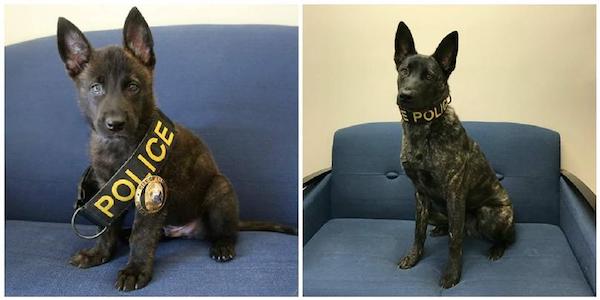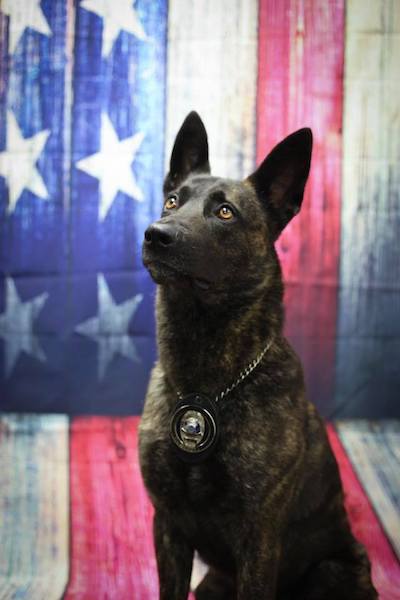
When we come across a term or phrase we think you should have in your mental library, we share it. It was in the course of reading about the Dutch Shepherd that we encountered a forum in which one of the participants, a police K9 handler, wrote, “I once sleeved a couple of dogs that looked like black or sable Malinois, dogs their handlers referred to as Dutch Shepherds.”
Before we get to the breed, “sleeving” refers to training police dogs on sleeves that are designed to teach the mechanics of a full, hard, and firm (no side-to-side movement) grip, and pushing behavior when on the grip. These are among the first lessons taught to dogs in many training programs because dogs taught to push when encountering stress will be much more successful, and this task is more easily taught on a sleeve typically made of a plastic cylinder hinged at the elbow and covered with thick soft leather.
Dutch Shepherds, among the breeds of choice by law enforcement agencies, have been described as having the drive of a Belgian Malinois with the sense of a German Shepherd Dog. Some officers find Dutch Shepherds perhaps a bit quieter in nature than another breed popular with the law and military, the Belgian Malinois. What the two breeds do have in common is that both are “anticipating thinkers,” dogs that in training know what the next exercise will require, and who often want to skip ahead and start with that one. This can make it challenging for a trainer to stay one step ahead of an extremely intelligent dog. The incorruptible and highly communicative Dutch Shepherd makes the effort worthwhile. In fact, KNPV Dutch Shepherds (along with KNPV Malinois) are the most commonly used breeds in the training program of the Royal Dutch Police Dog Association, or De Koninklijke Nederlandse Politiehonden Vereniging: KNPV.
According to one police dog center located in the Netherlands, there are two different “types” of Dutch Shepherds: The first is the  FCI registered Dutch Shepherd bred to FCI standards that generally competes in conformation shows or performance disciplines like agility. The second type of Dutch Shepherd is one most commonly found in the Royal Dutch Police Dog, a dog that is, and always has been, bred to be a working police dog. Not only did a Dutch Shepherd named “Fritz” win an international Police dog competition in Germany back in 1908, but since 2000, Dutch Shepherds have been winning the national KNPV championships on a regular basis. The 2001 PH1, 2002 PH2, 2003 PH2, 2006 PH1 titles were all won by Dutch Shepherds.
FCI registered Dutch Shepherd bred to FCI standards that generally competes in conformation shows or performance disciplines like agility. The second type of Dutch Shepherd is one most commonly found in the Royal Dutch Police Dog, a dog that is, and always has been, bred to be a working police dog. Not only did a Dutch Shepherd named “Fritz” win an international Police dog competition in Germany back in 1908, but since 2000, Dutch Shepherds have been winning the national KNPV championships on a regular basis. The 2001 PH1, 2002 PH2, 2003 PH2, 2006 PH1 titles were all won by Dutch Shepherds.
KNPV shepherds are not without controversy. The KNPV has no requirement for dogs to have an official pedigree, and many unregistered Dutch Shepherds found in the KNPV program have Malinois in them. In the eyes of the organization, whether a dog is a Malinois or a Dutch Shepherd comes down to appearance, and that is problematic for some people. That said, we’ve read that in some European countries, official stud books have not been closed for the Dutch Shepherd, and a number of quality unregistered Dutch Shepherds from the KNPV program have entered the FCI database.
We wanted you to know not only what “sleeving” means, but what a KNPV Dutch Shepherd or Malinois is should you come across either term.
Our image at the top is of “Blue,” a Dutch Shepherd whose photo appears with kind permission of Carole Field of Cher Car Kennels. Blue is a dual purpose narcotics dog now working at the Evart Police Department. The side photo of Blue was taken in 2019 and appears on the Facebook page of the Evart Police Department.
